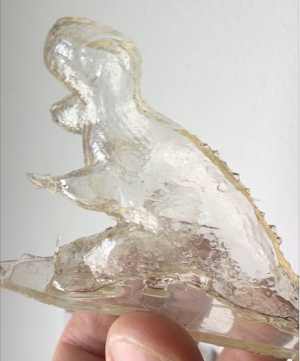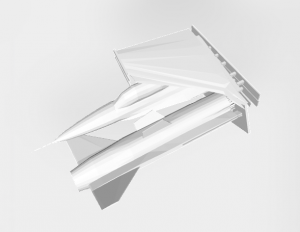How to prepare 3d models for the D7
The D7 is undoubtedly powered by magic, but it cannot do 90° angled 'bridges' or ... negative overhangs. Your model needs to allow some kind of gradient. The dinosaur only needed a support 'channel' to the negative overhangs, which was strong enough to physically support them until the 'bridge' was connected. The F16 was cut into pieces to fit into the space, but also had to not have overhangs. The wings base is at an angle to the 'floor'.
all models aught to be raised from the 'print floor' (and should have a plate of 1mm(?) to enable them to suck to the build plate). If you keep a cube 'flat' aligned to the floor, it will look melted. This is because the model must 'grow' at 90°, which it cannot. The outstretched, ultra-thin wafer-layer bends, and new material re-inforces that bend. . Aligning your models at 45° in BOTH dimensions (at an angle and .. also at an angle...) gets around that problem. But, The layers ARE visible on the D7, if tiny, so you can see a 'grain'. These are just the facts of life.
Notice that the dinosaur and F-16 have plates, but do not sit on them. Instead each part is supported with a few, strong supports. There is software on the HS PC to automatically create supports with tiny connections to the model so that it is less disfiguring to the model to remove them. Supports are an art. These two models were largely successful. Perfection comes at cost. A cost I was not willing to bear for these models (!)



